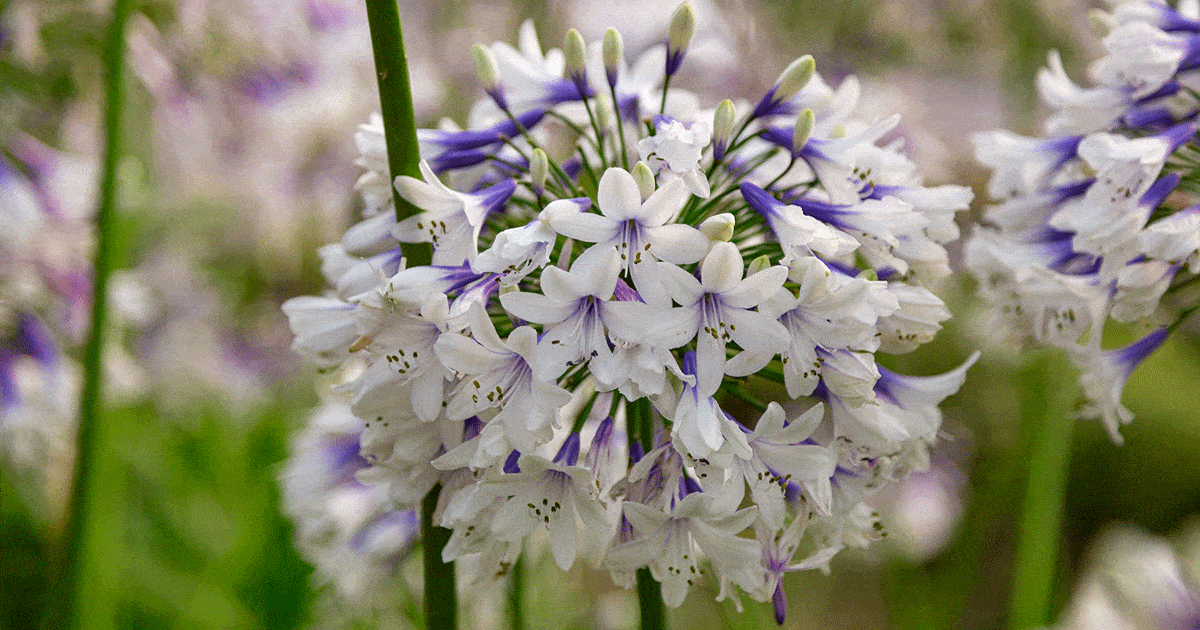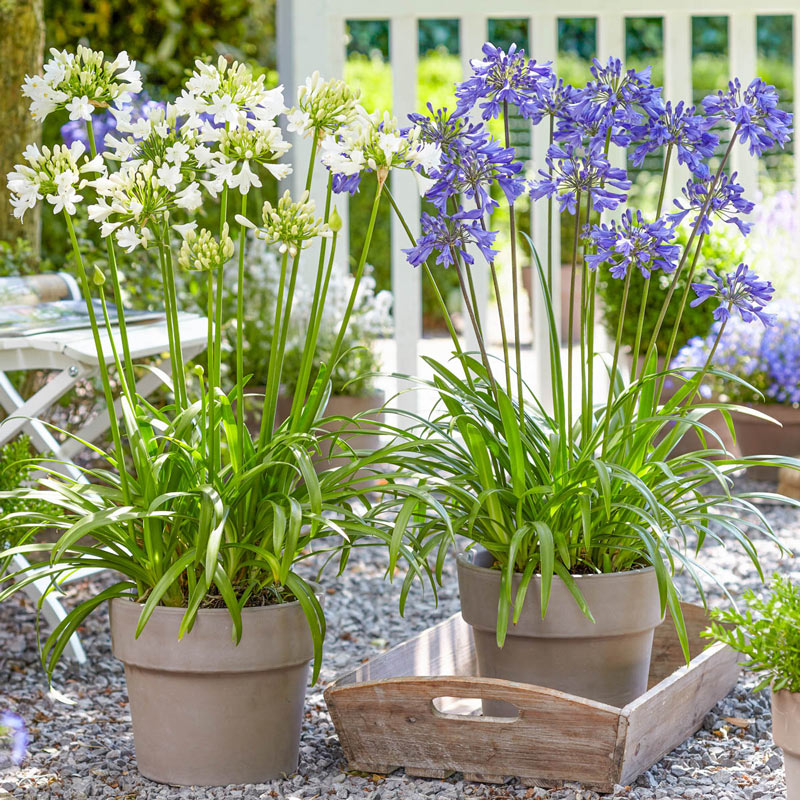Exactly how to Plant and Maintain Agapanthus in Your Garden
Exactly how to Plant and Maintain Agapanthus in Your Garden
Blog Article
Letting Loose the Secret to Effective Agapanthus Growing: Idea for a Flourishing Yard
In the realm of gardening, growing agapanthus efficiently calls for a strategic approach that includes different aspects of plant treatment. With mindful attention to detail, one can unlock the tricks to supporting these magnificent blossoms, resulting in a yard that prospers with elegance and vibrancy. By understanding the nuances of agapanthus cultivation, one can create a setting where these plants flourish and bloom perfectly. In the complying with discussion, we will explore necessary suggestions and tricks that will certainly guide you towards a prospering agapanthus yard, offering understandings into best techniques, dirt conditions, watering techniques, and a lot more.
Planting Agapanthus: Finest Practices
When growing Agapanthus, appropriate dirt preparation is necessary for ensuring successful development and development of these lovely flowers. Agapanthus, frequently recognized as Lily of the Nile or African lily, grows in well-draining soil with a somewhat acidic to neutral pH level - Agapanthus. Prior to planting, it is crucial to modify heavy clay soils with raw material such as garden compost or peat moss to boost drain and provide necessary nutrients for the plants
To grow Agapanthus, select a location that gets complete sunlight to partial color, as this will promote healthy and balanced growth and bountiful flowering. Dig an opening two times the size of the plant's origin ball and place the Agapanthus at the very same deepness it was previously expanding. Gently backfill the hole with soil, weighing down firmly to eliminate any air pockets around the origins.
Water the newly planted Agapanthus extensively and remain to keep the soil uniformly damp, especially during the plant's energetic growing period. Agapanthus. Applying a well balanced plant food once a month can further support the plant's growth and flowering. By complying with these finest methods for planting Agapanthus, you can produce a magnificent display of these captivating blossoms in your yard
Perfect Dirt Issues for Agapanthus
For ideal development and flowering success of Agapanthus plants, guaranteeing the dirt conditions are optimal is important. Agapanthus likes dirt that is abundant in nutrients, so integrating a balanced plant food during the growing period can advertise healthy growth and vivid blooms.

Watering and Feeding Tips
To make sure healthy growth and vibrant blooms, proper watering and fertilizing techniques are vital for effective Agapanthus farming. Agapanthus plants benefit from routine watering, especially throughout the expanding season. It is recommended to water deeply as soon as a week, making sure the soil is damp however not soaked. Throughout heat or in pots, more regular watering might be essential to avoid the Full Report dirt from drying entirely.
When it involves feeding Agapanthus, a well balanced fertilizer with equal parts nitrogen, phosphorus, and potassium can be used in the springtime to promote healthy growth and flowering. Slow-release plant foods are ideal for providing nutrients progressively over an extensive look at this site period. Stay clear of over-fertilizing, as this can bring about extreme foliage development at the cost of blooms.
In addition, integrating raw material like compost right into the soil can boost nutrient degrees and boost dirt structure, aiding in the total health and wellness of the Agapanthus plants. By following these watering and feeding suggestions, gardeners can ensure their Agapanthus plants thrive and produce stunning screens of flowers.
Trimming and Deadheading Techniques
Appropriate trimming and deadheading strategies play a vital function in preserving the health and aesthetics of Agapanthus plants, matching the important techniques of watering and fertilizing for effective cultivation. Pruning Agapanthus entails removing spent flower heads, dead or yellowing leaves, and total shaping of the plant to promote much better development. Deadheading, the procedure of getting rid of discolored flowers, not only improves the plant's appearance however additionally urges additional growing.
When deadheading Agapanthus, it is advisable to snip off the blossom stem at the base utilizing sharp, tidy shears. This procedure reroutes the plant's power from seed production back right into origin and vegetation growth, promoting a healthier and extra durable plant. Regular deadheading can expand the flowering duration of Agapanthus and avoid self-seeding, which can bring about overcrowding.
In terms of trimming, Agapanthus usually gain from a light trim after blooming to clean up the plant and motivate fresh growth. Cutting down the spent blossom stems and eliminating any type of broken or dead vegetation helps preserve the plant's vigor and overall look. Nonetheless, it is important to avoid reducing right into the crown of the plant, as this can weaken its wellness.

Protecting Agapanthus From Vermins and Diseases
Executing effective parasite and condition administration strategies is important to protecting the health and vigor of Agapanthus plants in growing. Agapanthus are generally durable plants, but they can still come down with various insects and illness if not correctly looked after. One common parasite that influences Agapanthus is the Agapanthus borer, a caterpillar that passages right into the plant, triggering damages to the blossoms and leaves. To protect against invasions, regular assessment of the plants is vital. If borers are detected, they can be manually removed, or insecticidal soap can be used as a control step.
In enhancement to parasites, Agapanthus are at risk to conditions such as origin rot and fungal fallen leave spots. By remaining vigilant and attending to parasite and disease issues promptly, garden enthusiasts can aid their Agapanthus grow and prosper.

Final Thought
In conclusion, successful farming of agapanthus needs proper growing techniques, check my source excellent soil problems, ample watering and fertilizing, normal pruning and deadheading, and defense from bugs and conditions. By adhering to these tricks and pointers, garden enthusiasts can guarantee a growing yard filled up with beautiful agapanthus blossoms. Agapanthus. Remember to preserve consistent treatment and attention to detail to advertise the wellness and longevity of these spectacular plants
When growing Agapanthus, correct soil preparation is crucial for guaranteeing successful growth and advancement of these attractive blossoms.Water the newly planted Agapanthus thoroughly and continue to maintain the soil evenly moist, especially during the plant's active growing season.For optimum growth and flowering success of Agapanthus plants, making certain the soil problems are excellent is important. When transplanting or growing Agapanthus, make sure the dirt is well-prepared to give the needed structure for the plants to develop themselves efficiently. One usual insect that impacts Agapanthus is the Agapanthus borer, a caterpillar that passages right into the plant, creating damages to the flowers and leaves.
Report this page